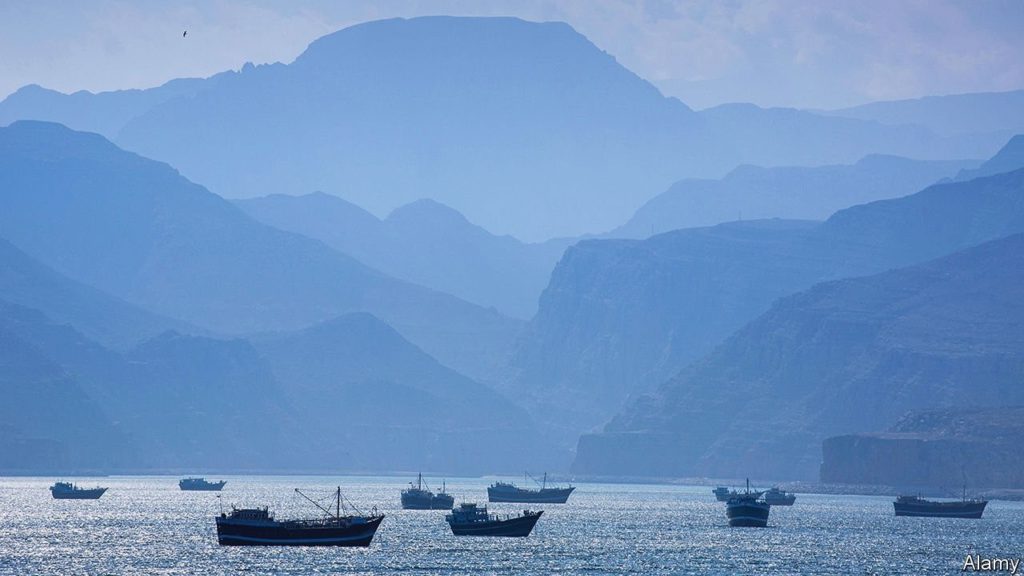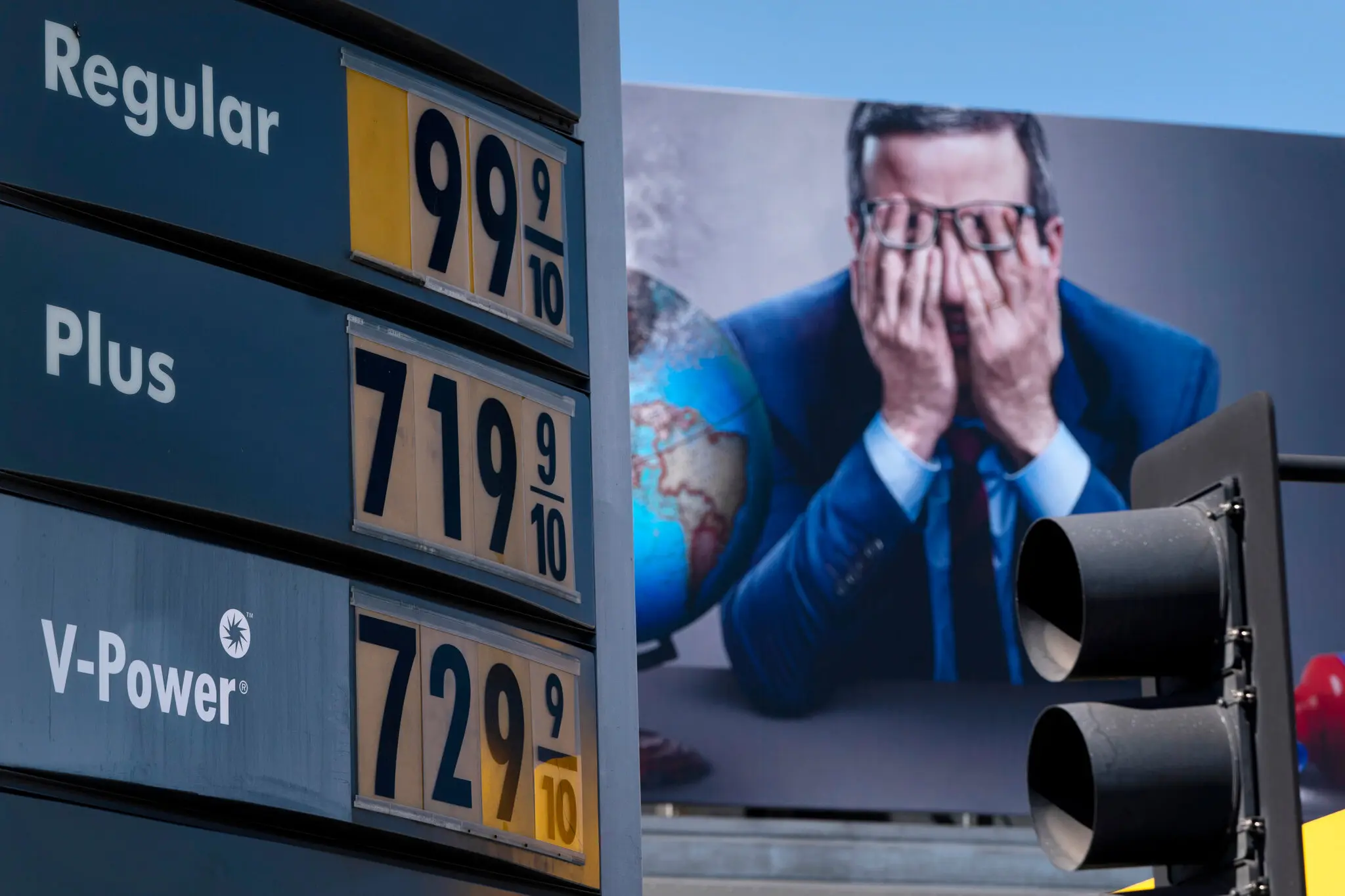
KHASAB — IN DAYLIGHT HOURS the boats leaving Khasab’s port motor off to fish, or ferry tourists to isolated fjords. After nightfall the traffic turns north. Just 100km separate this Omani town from the port of Bandar Abbas in Iran (see map), an hour or two’s journey by chugging dhow. This has made it a long-standing hub for smuggling—although that term suggests a level of skulduggery hardly apparent in Khasab’s sleepy port (pictured above). Authorities tolerate the trade, so long as it happens after dark.
A decade ago, as multilateral sanctions piled up on Iran, meant to press it into talks over its nuclear programme, boats headed north stuffed with appliances and luxury cars. On the return journey some carried nervous-looking sheep to be sold in the neighbouring United Arab Emirates (UAE). Business is not quite so good today. Iran has closer trade ties with China and a growing manufacturing sector, both of which diminish the need for refrigerators and televisions lashed to dhows.

Still, places like Khasab illustrate the complicated relationship between Iran and its neighbours. The six-member Gulf Co-operation Council (GCC) has broadly testy relations with Iran. But political tensions coexist with deep economic ties, which have become increasingly vital as world powers seek to revive the agreement of 2015 that imposed limits on Iran’s nuclear work in exchange for easing sanctions.
In 2018 Donald Trump withdrew America from the deal, which is now largely defunct. On March 11th, after almost a year of talks, negotiators in Vienna put their work on “pause”. They had been close to an agreement until Russia demanded that its trade with Iran be exempted from Western sanctions. That was a patent ploy to create a way around the tough sanctions imposed on Russia after it invaded Ukraine.
Russia’s demand threatened to derail the whole process—or perhaps not. Russian diplomats now say they never sought loopholes, merely a promise that their obligations under the deal, such as taking custody of Iran’s excess enriched uranium, would not be affected by sanctions.
On March 15th Sergei Lavrov, Russia’s foreign minister, met Hossein Amirabdollahian, his Iranian counterpart, in Tehran. Both said Russia was no obstacle to a deal. Barring another about-face, that leaves America and Iran to resolve a few glitches, mostly about sanctions relief. Iran’s release of two British-Iranians hinted at its desire to mollify Britain. One of them was Nazanin Zaghari-Ratcliffe, who was held for six years in prison and under house arrest. Her case was not connected to the nuclear deal.
An agreement would prompt mixed emotions in the GCC. Oman, on friendly terms with Iran, is an outlier in the bloc. The UAE is closer to the mean. It sees Iran as a threat; they have a territorial dispute over three islands in the Persian Gulf. But they also have the tightest economic ties of any Gulf states, thanks in part to a large community of Iranian émigrés in Dubai. The two countries are big trading partners: Iran takes around 3% of the UAE’s annual exports. There is talk of doubling bilateral trade to $30bn in 2025. Billions of dollars of Iranian assets sit in Emirati banks.
Initially happy with Mr Trump’s withdrawal from the nuclear deal, the UAE soon changed its mind. In 2018 and 2019 Iran and its proxies staged a series of attacks in the GCC, sabotaging oil tankers near Fujairah, a UAE statelet, and hitting Saudi oil facilities with drones and cruise missiles.
That prompted a policy change. Despite American sanctions, Iran has been exporting up to 1m barrels a day of oil, mostly to China. Some of this oil is shipped through third countries to hide its origin. The UAE has become a big part of this trade: Bourse and Bazaar, a think-tank in London, estimates that some $13bn worth of Iranian crude reached China via the UAE in the first nine months of 2021. Much of that money is spent on imported goods from the UAE.
All of this rankles American officials. In December a delegation from the us Treasury flew to Abu Dhabi, the capital of the UAE, to complain about sanctions-busting. Well before then, the Trump administration was angry with Qatar for undermining its “maximum pressure” campaign against Iran. After three of its Gulf neighbours imposed a blockade on it in 2017, Qatar boosted trade with Iran, with imports climbing five-fold to $418m within a year.
Economic diplomacy has its limits. The UAE had hoped that trade ties with Iran would help shield it from further attacks. Tahnoun bin Zayed, the Emirates’ powerful national-security adviser, has advocated detente, visiting Tehran last year. Since January, though, Iranian-backed groups in Yemen and Iraq have lobbed a series of drones and missiles at Abu Dhabi, killing three people and denting the country’s reputation for stability.
Still, despite the attacks, Iran’s trade minister led a large delegation to the UAE last month. “They didn’t talk about it much in the media. But they didn’t cancel it either,” observes a Western diplomat. If the nuclear deal is revived, the Emirates can offer billions of dollars of needed trade and investment in exchange for regional calm. If it is not, the dhows in Khasab may find their cargoes piling up once again.
By The Economist




